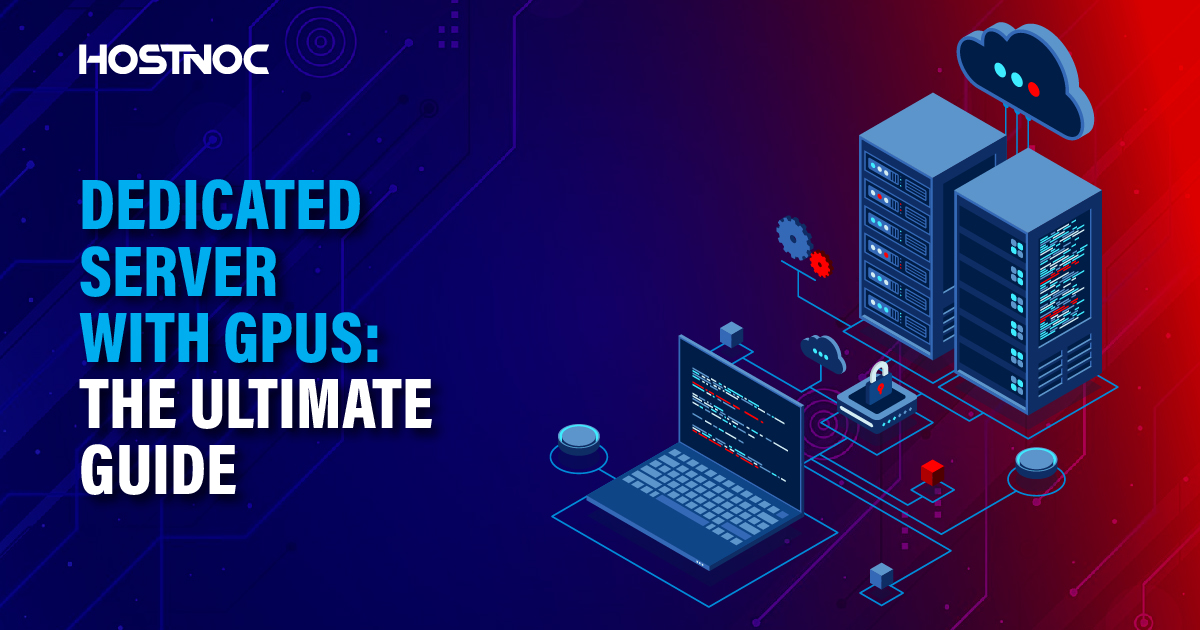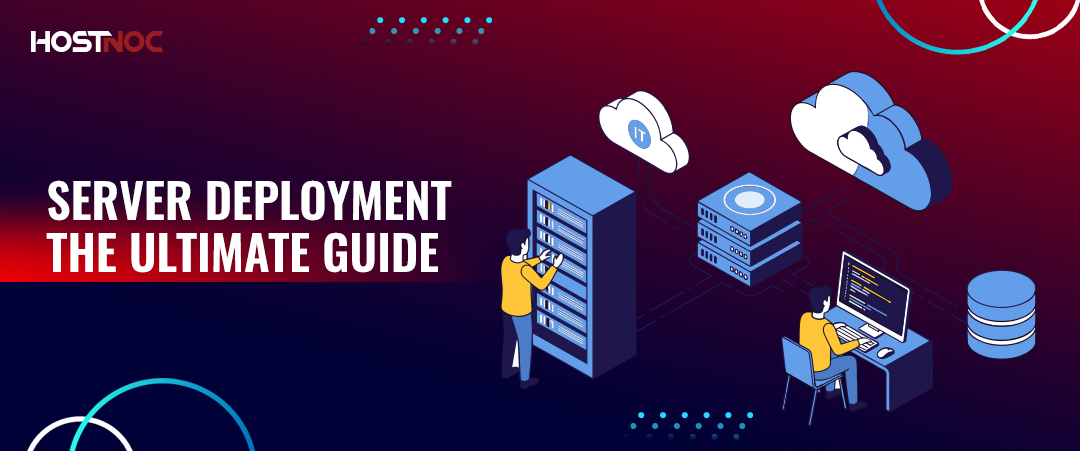Blogs

401 Error: Everything You Need to Know
August 30, 2024
How To Create a High-Converting and Profitable Affiliate Marketing Funnel?
September 2, 2024Server Configuration: The Only Guide You Will Ever Need
Whether you are setting up a server for a personal project or managing servers for a large organization, understanding how to properly configure your server can enhance security, optimize performance and ensure reliability. This comprehensive guide will walk you through the essential steps and best practices for server configuration, ensuring you have all the knowledge needed to get started.
Whether you are setting up a server for a personal project or managing servers for a large organization, understanding how to properly configure your server can enhance security, optimize performance and ensure reliability. This comprehensive guide by HOSTNOC will walk you through the essential steps and best practices for server configuration, ensuring you have all the knowledge needed to get started.
- Server Configuration: The Only Guide You Will Ever Need
- 1. Understanding the Basics of Server Configuration
- 2. Choosing the Right Operating System
- 3. Setup and Server Configuration
- 4. Security Configuration
- 5. Performance Optimization
- 6. Setting Up Server Roles and Applications
- 7. Monitoring and Maintenance
- 8. Scaling and Load Balancing
- Conclusion
Server Configuration: The Only Guide You Will Ever Need
1. Understanding the Basics of Server Configuration
Server configuration involves setting up the server’s software and hardware to perform a specific role or function. This process includes selecting the operating system, installing necessary software, setting up networking, and applying security measures. The goal is to optimize the server’s performance, maintain server security and ensure it meets the requirements of your application or service.
Types of Servers:
● Web Servers:
Serve websites and web applications to users.
● Database Servers:
Store and manage databases.
● File Servers:
Provide file storage and management.
● Mail Servers:
Handle email delivery and receipt.
● Application Servers:
Host applications and provide business logic for app functionality.

2. Choosing the Right Operating System
The operating system is the foundation of any server. The choice between Linux and Windows, the two most popular server operating system options, will depend on your specific needs and existing infrastructure.
Read more: Reliable Linux Dedicated Servers
Linux Servers:
Pros:
- Open-source
- Highly customizable
- considered more secure by some due to its permissions structure
- Fewer targeted attacks
Popular Distributions:
- Ubuntu Server
- CentOS
- Debian
- Fedora
- Red Hat Enterprise Linux (RHEL)
Read more: High-Performance Windows Dedicated Servers
Windows Servers:
Pros:
- Integration with other Microsoft products
- Easy to use for those familiar with Windows
- Provides robust support for .NET applications
Popular Versions:
- Windows Server 2016
- Windows Server 2019
- Windows Server 2022
Key Considerations When Choosing an Operating System
Here are some of the things you must consider when choosing an operating system for your servers.
Compatibility:
Ensure the operating system is compatible with your application requirements.
Security:
Consider the security features offered by the operating system.
Community and Support:
Open-source communities and official support can be crucial, especially for troubleshooting and updates.
3. Setup and Server Configuration
Once the operating system is chosen and installed, several initial configuration steps are crucial to secure and optimize the server.
a. Update the System:
Ensure that all software packages are up to date to protect against vulnerabilities. Use the appropriate package manager (`apt` for Ubuntu/Debian, `yum` or `dnf` for CentOS/RHEL) or Windows Update for Windows servers.
b. Configure the Hostname:
Set a unique hostname to identify the server on the network. This is crucial for DNS settings and managing multiple servers.
c. Set Up Network Configuration:
Configure the server’s IP address, subnet mask, gateway, and DNS servers. Decide between a static or dynamic IP based on your network architecture.
d. Partition and Format Disks:
Properly partitioning the disk allows better management of space and improves performance. Use tools like `fdisk` or `parted` in Linux or Disk Management in Windows.
e. Set Up SSH for Remote Access (for Linux):
Secure Shell (SSH) is a protocol for secure remote access. Ensure it is installed (`sudo apt-get install openssh-server` for Ubuntu) and configured correctly to prevent unauthorized access.
f. Configure Windows Remote Desktop (for Windows):
Enable Remote Desktop Protocol (RDP) for remote server management. Ensure it is set up securely by restricting access to specific IP addresses and using strong authentication methods.

4. Security Configuration
Securing your server should be a top priority to prevent unauthorized access and potential breaches.
a. Firewalls:
Configure a firewall to control incoming and outgoing traffic. Use `iptables` or `firewalld` for Linux servers and Windows Defender Firewall for Windows servers.
b. Disable Unnecessary Services:
Reduce attack surfaces by disabling services and ports that are not needed for your server’s operation.
c. Implement Fail2Ban or Windows Firewall Rules:
Tools like Fail2Ban help prevent brute-force attacks by blocking IPs that exhibit malicious behavior. Configure Windows Firewall with similar rules to protect against unauthorized access.
d. Use Strong Passwords and Authentication:
Enforce strong password policies and consider using multi-factor authentication (MFA) for added security.
e. Regularly Update and Patch:
Keep the operating system and all software up to date with the latest security patches.
5. Performance Optimization
Optimizing server performance involves fine-tuning system resources and settings to ensure the server runs efficiently.
a. Optimize Memory and CPU Usage:
Monitor resource usage using tools like `top`, `htop` (Linux), or Task Manager (Windows). Adjust the allocation of memory and CPU resources based on the server’s role.
b. Configure Swap Space:
Swap space acts as overflow for RAM, preventing system crashes when memory is exhausted. Ensure swap space is configured properly to match your server’s needs.
c. Optimize Disk Input/Output:
Disk I/O can be a bottleneck for performance. Use tools like `iostat` to monitor disk usage and adjust settings or upgrade hardware as necessary.
d. Implement Caching:
Use caching solutions like Memcached or Redis to reduce database load and speed up response times for frequently accessed data.
6. Setting Up Server Roles and Applications
After securing and optimizing the server, it is time to configure it for its specific role, whether as a web server, database server or another type.
a. Web Server Configuration:
- Install web server software like Apache, Nginx or IIS.
- Configure virtual hosts to manage multiple domains on a single server.
- Implement SSL/TLS for encrypted communications
b. Database Server Configuration:
- Install and configure databases like MySQL, PostgreSQL or Microsoft SQL Server.
- Secure database access by creating strong user roles and permissions.
- Regularly back up databases and configure replication for high availability
c. Application Server Configuration:
- Deploy application servers like Tomcat or JBoss for Java applications
- Ensure runtime environments (e.g., Java, Python, .NET) are correctly installed and configured.
7. Monitoring and Maintenance
Continuous server monitoring and maintenance are vital to ensure server health and performance over time.
a. Monitor Server Health:
Use monitoring tools like Middleware, Nagios, Zabbix or Windows Performance Monitor to track server metrics like CPU usage, memory usage, disk space and network traffic.
b. Regular Backups:
Implement regular backups of critical data and server configurations. Use tools like `rsync` for Linux or Windows Server Backup for Windows.
c. Log Management:
Regularly review logs for unusual activity.Set up centralized logging solutions for easier analysis and monitoring.
d. Automate Maintenance Tasks:
Use cron jobs (Linux) or Task Scheduler (Windows) to automate routine maintenance tasks like backups, updates and log rotation.
8. Scaling and Load Balancing
As demand grows, scaling your server infrastructure becomes necessary to maintain performance and availability.
a. Vertical Scaling:
Increase server resources such as CPU, memory, storage and network bandwidth to handle more load. This approach has limits and can become costly.
b. Horizontal Scaling:
Add more servers to distribute the load. Use load balancers to manage traffic between servers effectively.

c. Implementing Load Balancers:
Use software or hardware load balancers (like HAProxy or AWS ELB) to evenly distribute incoming traffic and ensure high availability.
Conclusion
Server configuration is a crucial task that requires careful planning and execution. From choosing the right operating system to setting up security measures and optimizing performance, each step plays a vital role in the server’s overall stability, security and efficiency.
Read More: How To Setup PPTP Server On Ubuntu Linux and CentOS?
By following this guide, you will be well-equipped to configure servers that meet your needs and ensure robust performance and security for your applications and services. Remember, server management is an ongoing process that requires continuous monitoring, updates and adjustments to adapt to new challenges and demands.
Did this guide help you in configuring your server? Share it with us in the comments section below.
Muhammad Osama
Featured Post
Dedicated Server with DDoS Protection: The Ultimate Guide for Secure Hosting
Table of Contents Key Takeaways Understanding DDoS Attacks Common Types of DDoS Attacks: Why Choose a Dedicated Server with DDoS Protection? Benefits of DDoS-Protected Dedicated Servers: […]
Dedicated Server With GPUs: The Ultimate Guide
There are various types of servers, each designed to cater to different workloads and use cases. Among these, dedicated server with GPU (Graphics Processing Unit) have […]
Server Deployment: The Ultimate Guide
Server deployment is the process of making an application, website, or system available for use by installing, configuring, and running it on a server (physical or […]












